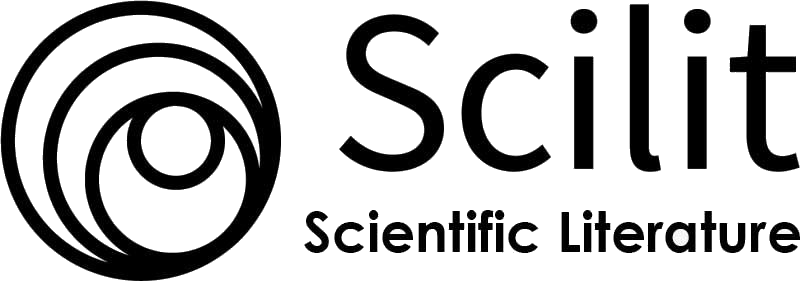Breastfeeding and Working Mother: Knowledge, Attitude and Practice in the Context of Healthcare Settings in Bangladesh
DOI:
https://doi.org/10.58425/jphs.v4i1.379Keywords:
Breastfeeding, working mothers, knowledge-attitude-practice (KAP), healthcare settings, BangladeshAbstract
Background: Breastfeeding is universally recognized as the optimal infant nutrition, providing essential nutrients and immunological protection. Despite its benefits, breastfeeding rates remain suboptimal among working mothers, particularly in healthcare settings. In Bangladesh, while breastfeeding initiation is nearly universal, exclusive breastfeeding rates drop significantly after four months due to workplace challenges and cultural practices.
Aim: This study assessed the knowledge, attitudes, and practices (KAP) of breastfeeding among working mothers in healthcare settings in Bangladesh.
Methods: A descriptive cross-sectional study was conducted among 100 working mothers from three hospitals in Barisal, selected through purposive sampling. Data were collected using structured questionnaires adapted from FAO guidelines, assessing socio-demographic characteristics, breastfeeding knowledge (8 items), attitudes (10 items), and practices (5 items). Ethical clearance was obtained, and confidentiality was maintained throughout the study. Statistical analysis included descriptive measures (mean, SD, percentages).
Results: Participants had a mean age of 32.08 (±6.30) years, with 72% in nuclear families. The mean breastfeeding duration was 10.32 (±6.38) months, falling short of the WHO recommendations. Knowledge scores were moderate (mean 76.5%), with gaps in awareness of breastfeeding's role in preventing diarrhea (35% correct) and dietary practices to enhance lactation (25% accurate). Attitudes were favorable (mean score 81.4%), though 48% endorsed pre-lacteal feeds. Practice scores were lowest (mean 52.1%), with only 20% receiving lactation counseling, 50% using pre-lacteal feeds, and 40% not breastfeeding on demand.
Conclusion: While working mothers demonstrated good breastfeeding knowledge and positive attitudes, practices were suboptimal due to cultural traditions and inadequate workplace support.
Recommendation: Interventions should include lactation counseling, workplace policies (lactation breaks, daycare), and community education to address misconceptions and improve breastfeeding practices.
References
Adhikari, M., Khanal, V., Karkee, R. et al. Factors associated with early initiation of breastfeeding among Nepalese mothers: further analysis of Nepal Demographic and Health Survey, 2011. Int Breastfeed J 9, 21 (2014). https://doi.org/10.1186/s13006-014-0021-6
Bangladesh Demographic and Health Survey (BDHS). (2011). National Institute of Population Research and Training (NIPORT). https://dhsprogram.com/pubs/pdf/fr265/fr265.pdf
Bhandari, N., Kabir, A. K., & Salam, M. A. (2008). Mainstreaming nutrition into maternal and child health programmes: scaling up of exclusive breastfeeding. Maternal & child nutrition, 4 Suppl 1(Suppl 1), 5–23. https://doi.org/10.1111/j.1740-8709.2007.00126.x
Elo, S., Kääriäinen, M., Kanste, O., Pölkki, T., Utriainen, K., & Kyngäs, H. (2014). Qualitative content analysis: A focus on trustworthiness. SAGE Open, 4(1).
Food and Agriculture Organization (FAO). (2011). Guidelines for assessing nutrition-related knowledge, attitudes, and practices. Rome: FAO.
Hassan, M. S., & Hossain, M. M. (2023). Challenges for influencing exclusive breastfeeding practice among lactating mothers with infants aged 0-6 months in Borama District, Somaliland: A cross-sectional study. Health science reports, 6(11), e1693. https://doi.org/10.1002/hsr2.1693
Hawkins, S. S., Griffiths, L. J., Dezateux, C., Law, C., & Millennium Cohort Study Child Health Group (2007). The impact of maternal employment on breastfeeding duration in the UK Millennium Cohort Study. Public health nutrition, 10(9), 891–896. https://doi.org/10.1017/S1368980007226096
Hirani, S. A., & Karmaliani, R. (2013). Evidence-based workplace interventions to promote breastfeeding practices among Pakistani working mothers. Women and birth: journal of the Australian College of Midwives, 26(1), 10–16. https://doi.org/10.1016/j.wombi.2011.12.005
https://www.who.int/news-room/fact-sheets/detail/infant-and-young-child-feeding
Lamberti, L. M., Fischer Walker, C. L., Noiman, A., et al. (2011). Breastfeeding and the risk for diarrhea morbidity and mortality. BMC Public Health, 11(Suppl 3), S15.
Meek, J. Y., Noble, L., & Section on Breastfeeding. (2022). Policy statement: Breastfeeding and the use of human milk. Pediatrics, 150(1). https://doi.org/10.1542/peds.2022-057988
Modak, A., Ronghe, V., & Gomase, K. P. (2023). The Psychological Benefits of Breastfeeding: Fostering Maternal Well-Being and Child Development. Cureus, 15(10), e46730. https://doi.org/10.7759/cureus.46730
Neves, P. A., Armenta-Paulino, N., Arroyave, L., Ricardo, L. I., Vaz, J. S., Boccolini, C. S., Richter, L., Peréz-Escamilla, R., & Barros, A. J. (2022). Prelacteal feeding and its relationship with exclusive breastfeeding and formula consumption among infants in low- and middle-income countries. Journal of Global Health, 12, 04104. https://doi.org/10.7189/jogh.12.04104
Oribe, M., Lertxundi, A., Basterrechea, M., Begiristain, H., Santa Marina, L., Villar, M., Dorronsoro, M., Amiano, P., & Ibarluzea, J. (2015). Prevalencia y factores asociados con la duración de la lactancia materna exclusiva durante los 6 primeros meses en la cohorte INMA de Guipúzcoa [Prevalence of factors associated with the duration of exclusive breastfeeding during the first 6 months of life in the INMA birth cohort in Gipuzkoa]. Gaceta sanitaria, 29(1), 4–9. https://doi.org/10.1016/j.gaceta.2014.08.002
Pérez-Escamilla, R., Martinez, J. L., & Segura-Pérez, S. (2016). Impact of the Baby-friendly Hospital Initiative on breastfeeding and child health outcomes: a systematic review. Maternal & child nutrition, 12(3), 402–417. https://doi.org/10.1111/mcn.12294
Rollins, N. C., Bhandari, N., Hajeebhoy, N., Horton, S., Lutter, C. K., Martines, J. C., … Lancet Breastfeeding Series Group. (2016). Why invest, and what will it take to improve breastfeeding practices? Lancet, 387(10017), 491–504. https://pubmed.ncbi.nlm.nih.gov/26869576/
Sharmin, L., Chowdhury, M. A., Khatun, S., & Ahmed, N. (2016). Barriers to Exclusive Breastfeeding among Urban Mothers. Journal of Enam Medical College, 6(2), 88–92. https://doi.org/10.3329/jemc.v6i2.27763
Taneja, S., Upadhyay, R. P., Chowdhury, R., Kurpad, A. V., Bhardwaj, H., Kumar, T., Dwarkanath, P., Bose, B., Devi, S., Kumar, G., Kaur, B., Bahl, R., & Bhandari, N. (2021). Impact of nutritional interventions among lactating mothers on the growth of their infants in the first 6 months of life: a randomized controlled trial in Delhi, India. The American journal of clinical nutrition, 113(4), 884–894. https://doi.org/10.1093/ajcn/nqaa383
Victora, C. G., Bahl, R., Barros, A. J., França, G. V., Horton, S., Krasevec, J., Murch, S., Sankar, M. J., Walker, N., Rollins, N. C., & Lancet Breastfeeding Series Group (2016). Breastfeeding in the 21st century: epidemiology, mechanisms, and lifelong effects. Lancet (London, England), 387(10017), 475–490. https://doi.org/10.1016/S0140-6736(15)01024-7
Waidler, J., Sunny, B., and Rees, G. (2021). Family-friendly policies in South Asia. UNICEF. Retrieved April 27, 2025, from Unicef.org website: https://www.unicef.org/innocenti/media/5311/file/UNICEF-Family-Friendly-Policies-South-Asia-2021.pdf
WHO. (2023). Exclusive breastfeeding for optimal growth, development and health of infants. https://www.who.int/tools/elena/interventions/exclusive-breastfeeding
WHO. (2023). Infant and young child feeding.
WHO. (2024). Diarrhoeal disease. https://www.who.int/news-room/fact-sheets/detail/diarrhoeal-disease
World Medical Association (2013). World Medical Association Declaration of Helsinki: ethical principles for medical research involving human subjects. JAMA, 310(20), 2191–2194. https://doi.org/10.1001/jama.2013.281053
Downloads
Published
How to Cite
Issue
Section
License
Copyright (c) 2025 Sangita Rani Mitra, Shah-Alam Bhuiyan, Israt Jahan, Abul Hossain Sikder, Mahfuja Begum, Nazmunnahar Happy

This work is licensed under a Creative Commons Attribution 4.0 International License.
The authors retain the copyright and grant this journal right of first publication. This license allows other people to freely share and adapt the work but must give appropriate credit, provide a link to the license, and indicate if changes were made. They may do so in any reasonable manner, but not in any way that suggests the licensor endorses them or their use.










